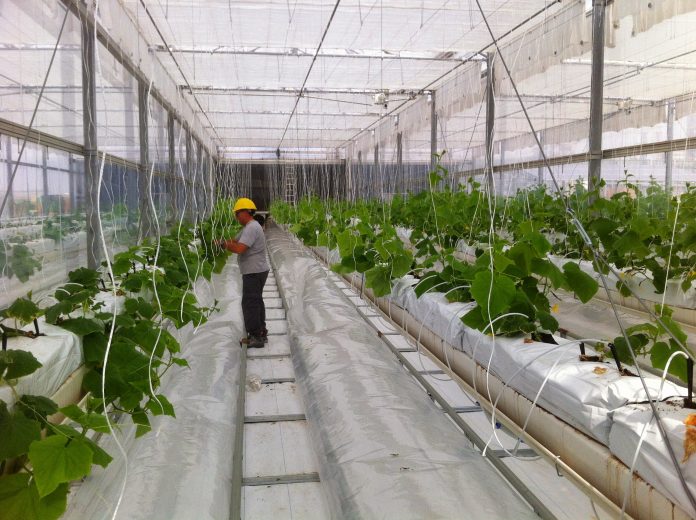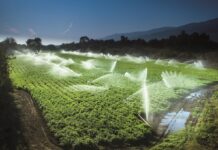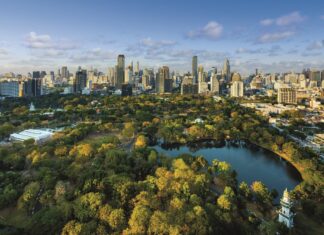The Sahara Forest Project (SFP) launch station has been opened outside Aqaba, a port city in Jordan. Part funded by the EU and Norwegian government, the facility highlights the possibility of using some of the world’s harshest landscapes to produce food, fresh water and clean energy.
In the first stage, the Sahara Forest Project aims to produce up to 130 tonnes of organic vegetables per year from just 7 acres of previously deemed ‘unusable’ land. The full scale of the project is set to reach 490 acres in the coming years.
“This is one of the most technically complex and satisfying projects we’ve had the pleasure to work on,” said Tom Bentham, Senior Partner at Max Fordham, an engineering firm collaborating with the Sahara Forest Project. “We’ve collaborated with experts across many countries and disciplines to bring this project to fruition. The salt water and desert environments are both testing on their own; when put together they create one of the harshest environments there is for engineering components.”
Max Fordham carried out research into technical aspects of the project including thermodynamic analysis of the greenhouse (to provide optimum growing conditions for crops with minimum resource input), desalination techniques, and the potential climatic effects of adding moisture to desert air.
The research included building and operating an experimental rig in the Qatari desert, to verify conclusions in the field. This culminated in the development of a mathematical computer model of the entire Sahara Forest Project system, which Max Fordham and SFP then used to investigate resource flows through the system and projected investment costs and returns.
“Jordan has a lot of sunlight, it has a lot of desert, it has sea water, it has CO2,” said Joakim Hauge, SFP Project Director. “That is what we need to produce food, water and renewable energy.”
The second stage of the collaboration was focused on the engineering design of the Sahara Forest Project system, firstly for the Pilot Project in Qatar, which opened in 2012 and operated for a year, then more recently for the larger launch station opened in Jordan. Max Fordham designed the saltwater cooling system for the greenhouse, as well as the services infrastructure, which joins up and enables the different energy and growing technologies, which comprise the SFP system.








